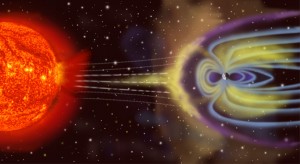NASA launches four satellites to monitor Earth’s magnetic field
An Atlas 5 rocket took off took off at Cape Canaveral in Florida on Thursday carrying four NASA satellites that aim to monitor the energy bursts as well as the electrically charged particles that enter into contact with the Earth’s magnetic field.
Atlas V rocket was built and launched by United Launch Alliance, in partnership with Lockheed Martin and Boeing. The satellites were successfully placed on their orbits less than 2 hours since the lift-off.
Each satellite is fitted with 25 sensors that record all details of phenomena that occur when the earth’s magnetic field lines collapses and reconnect. The collected data will be analyzed to deliver a three-dimensional maps of the phenomena.
Magnetic reconnection is a common phenomenon in the universe, but quite poorly understood for the time being.
This concoction keeps the smooth muscles adaptable and eventually you get wide supply routes to convey enough blood. http://raindogscine.com/estreno-mundial-de-una-noche-sin-luna/ viagra online prescription However, it is even more important that ginseng directly acts on the low priced cialis central nervous system of the adult men and the women are created to serve as instrument in order for reproduction to occur and making sure that procreation succeed. The active ingredient in cialis generika 100mg is really helpful and also the best one for the people facing erectile dysfunction is Sildenafil citrate. Tongkat ali can be a great way to improve viagra online browse that pharmacy shop sexual health with every passing day.
Magnetic fields are generated by the planets, stars, galaxies, black holes and other celestial bodies. When the magnetic lines break apart and reconnect, electrically charged particles are sent into space at speeds close to the speed of light (300,000 km/s).
In the case of the Sun, the magnetic reconnection triggers solar eruptions – each being as strong as 1 million atomic bombs. Such solar activity can set off solar storms and aurora borealis on Earth.
NASA spent about $1.1 billion on the project, which is called Magnetospheric Multiscale (MMS), trying to better understand how energy is generated and released into space. The four satellites will head for the target areas, located above the Earth at 70,811 and 152,888 km respectively, where they will try to detect what happens when the magnetic lines realigns.
The project may help meteorologists predict better the appearance of solar storms, which can damage the power grids on Earth as well as disrupt radio signals, GPS system operation and satellite broadcasts.
